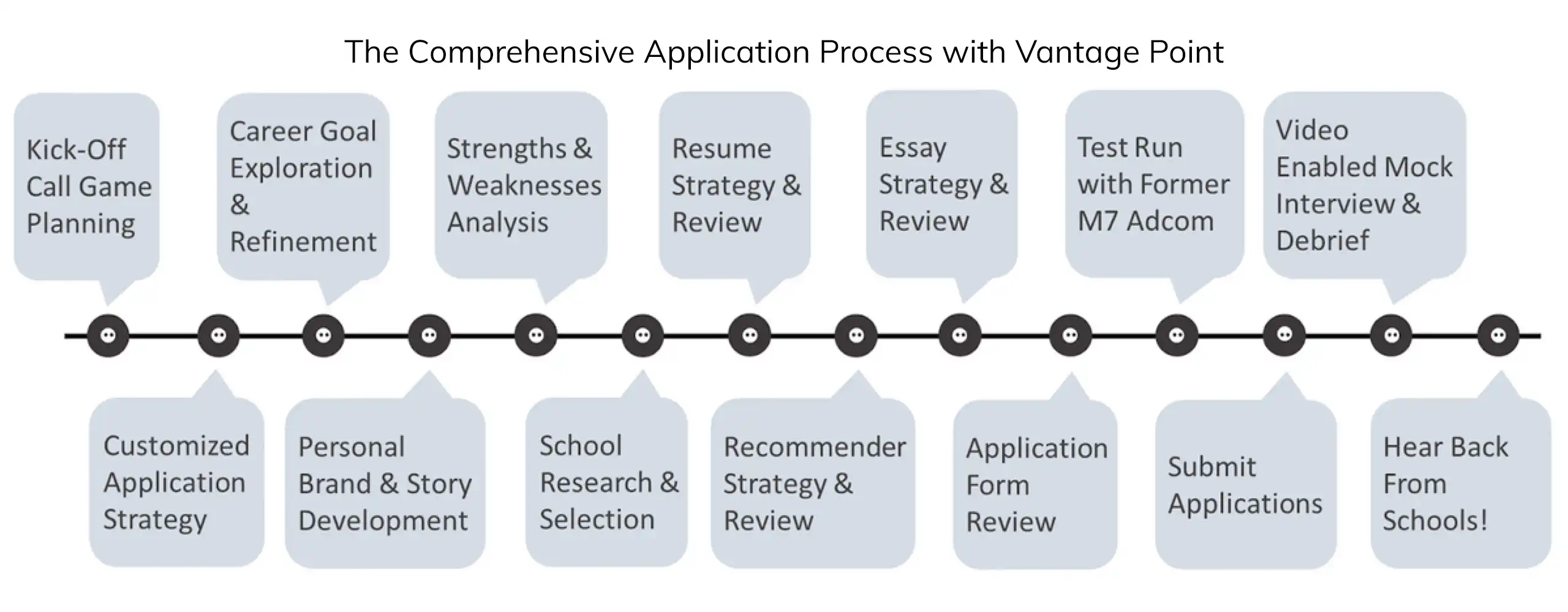MBA Application Form Best Practices

Originally published on December 21, 2023. Updated on December 19, 2024. When seeking MBA application advice for filling out forms, you may have heard the saying, “you never get a second chance to make a first impression.” This concept is rooted in psychology, known as the primacy effect, where the initial impression someone forms tends to stick. For MBA applicants, your MBA application form is the first step to making a strong impression, and it’s important to follow MBA application best practices from the start. MBA application advice is essential for understanding how to approach tricky questions and showcase your strengths. By applying MBA application best practices, you’ll ensure your MBA application form is well-organized and compelling. Seeking expert MBA application advice will further enhance your chances of standing out. Ensure your MBA application form reflects your best qualities by following MBA application advice at every step.
As you complete your MBA application forms (yes, those questions about yourself that you may have left for last!), keep this in mind. When the admissions committee (adcom) sits down to review your submission, the application form is typically the first thing they’ll see. This means it’s essential to ensure that your responses are not only accurate and error-free but also strategic.
While many of the questions are cut and dry, a number of them allow for text-based answers and should be used to reinforce – or even supplement – the other components of your application. MBA application forms vary by school, of course, but here are some best practices that tend to apply to most programs.
Crafting thoughtful and well-crafted responses is key to making your MBA application form stand out. If you’re looking for personalized guidance to refine your answers, our experts are here to help.
Personal & Family Background
Most MBA application forms include opportunities to share more about your personal or family background. This could be through checkbox questions (e.g., indicating if you’re a first-generation college student or were raised in a single-parent home) or through open-text fields.
So, what should you share? If you had a fairly typical upbringing with no major hardships, it can feel tempting to leave this blank. Don’t! Everyone has a story, and your upbringing likely shaped who you are today. For example:
- Were you raised in a military family and moved frequently?
- Are you one of six siblings?
Whatever you choose to include, the ‘best practice’ is to describe the situation but then share how it impacted you and your choices in life. If you moved around a lot, maybe you grew into a person who makes new friends wherever they go and are always bringing people together for fun events. This would be a great contribution on a business school campus!
Employer & Role Descriptions
The work history section is a critical part of any MBA application form. Here, you’ll list your roles, responsibilities, and salary information. Some applicants feel like this duplicates their resume, but that perspective overlooks an important strategic opportunity.
If you’ve crafted an effective MBA resume, it should be with only 1–2 bullets covering day-to-day responsibilities. In contrast, the application form is your chance to:
- Elaborate on your role: How does your position fit into your team? How does your team contribute to the organization as a whole?
- Simplify for a broad audience: Write your answers so someone unfamiliar with your industry or function can understand.
This approach not only provides valuable context to the adcom but also demonstrates your communication skills, a vital trait for business leaders.
Other Work History Questions
Another question that is typically asked in the work history section of MBA application forms is your reason for leaving each company you’ve worked for in the past. As we shared last month, you definitely don’t want to badmouth your former employer—it’s just not a good look.
The best practice here is to use these answers to demonstrate that you are thoughtful and deliberate about your career choices. Instead of focusing on why you left a job, highlight why you chose your next role. For example:
- Why you accepted the next role, not why you left the previous one.
- What skills or experiences you were seeking in the new position.
For your current role, even if you haven’t officially left yet, avoid writing “N/A.” Instead, explain that you are planning to leave to attend business school and describe the skills or experiences you hope to gain to support your long-term goals.
Post-MBA Goals (and a Broadly Applicable Note About Character Limits)
It’s safe to assume that all MBA applications will ask about your post-MBA career goals. This is undoubtedly a crucial answer to get right. However, your responses become even more critical in applications where the essay questions don’t explicitly ask about your goals.
For instance, did you know that the HBS adcom has repeatedly stated that they don’t want you using valuable word count in your essays to talk about ‘why MBA’ or ‘why HBS’? MIT Sloan is another program where the essay focuses way more heavily on past experiences than future goals.
Pro Tip: Maximize the character count you’re given. Avoid wasting space by restating the question. Instead, treat the response as a fill-in-the-blank exercise. For example:
Question: “What is your immediate post-MBA career goal?”
- Option A: After business school, I will obtain a role at a healthcare startup in strategy and business development, where I can gain experience to eventually found my own compan
- Option B: To work in strategy at a healthcare technology startup like Nourish or PatientPoint, where I can apply my healthcare background and learn to scale a business, enabling my long-term entrepreneurial goals.
Both options are roughly 200 characters, but option B comes across as a lot more thoughtful and informative.
Additional Tips:
- Demonstrate a logical progression between your short-term and long-term goals.
- Include specific companies or sectors, as well as the roles you aim to target.
One Last Tip for When You Think You Are Done
Once you’ve nailed the content for each of your MBA application form responses, please please please proofread everything one more time. We’re all used to relying on spell check and the like in Word, it can be easy to forget that the application fields are not subject to these quality controls. You may even want to copy and paste your text answers into Word and let technology do the work. A careless error can do a lot of damage to an otherwise strong application.
We hope the MBA application form best practices we’ve shared today help you ‘wow’ the adcom with your submission. We also hope they demonstrate why you shouldn’t view this important piece of the application as an afterthought. Admissions committees truly want a holistic understanding of who you are and what you would bring to their class – don’t miss any opportunity to tell them!
Need help making the most of this opportunity? Let us guide you in crafting a strong, compelling application that truly reflects who you are.





Pingback: Leveraging Online Courses and Certifications to Strengthen Your MBA Application
July 1, 2024 8:15 pmRiya
November 28, 2024 4:17 amOh this post includes many important factors that can help the process of MBA Admission all over.
Your thoughts are deep and best.
Thanks for sharing